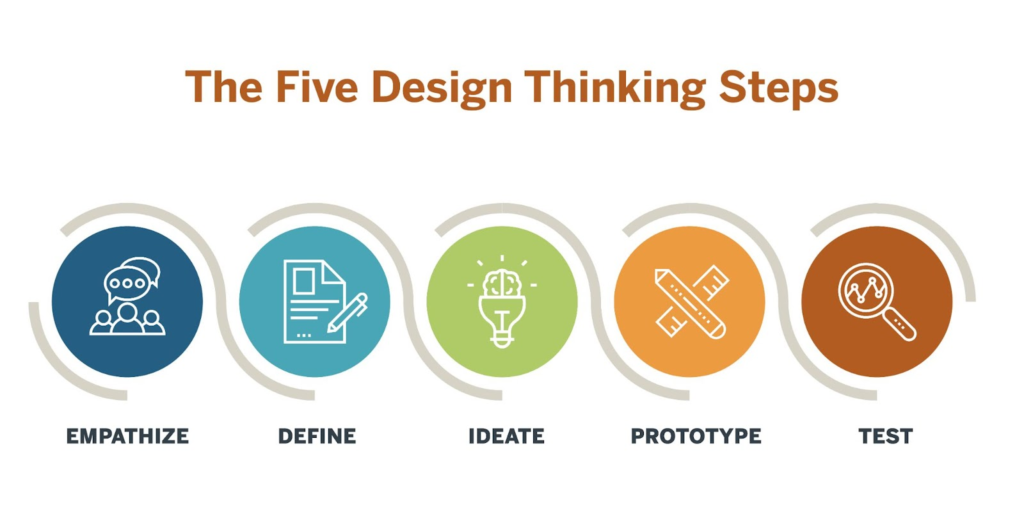Your cart is currently empty!

Design thinking isn’t just for professionals in fancy offices or tech-savvy entrepreneurs—it’s a powerful problem-solving approach that anyone can use, including you. Whether you’re tackling personal challenges or dreaming up ways to improve your community, design thinking can help you unleash your creative power and make a real difference. So, what exactly is design thinking, and how can it help you solve problems both big and small? Let’s dive in!
What is Design Thinking? At its core, design thinking is a human-centered approach to innovation and problem-solving. Instead of jumping straight to solutions, design thinking emphasizes empathy, creativity, and iteration. It’s about understanding people’s needs, brainstorming creative ideas, and testing and refining those ideas through experimentation and feedback. It is about people first, not just your cool ideas.

The Design Thinking Process: Design thinking is often described as a series of iterative steps, typically grouped into five phases: empathize, define, ideate, prototype, and test. Let’s walk through each step and see how it can be applied to solving personal and community problems:
- Empathize: The first step in design thinking is to empathize with the people you’re designing for. This means putting yourself in their shoes, listening to their stories, and understanding their needs, desires, and challenges. Whether you’re solving a personal problem like managing your time more effectively or addressing a community issue like homelessness, empathy is key to understanding the root causes of the problem.
- Define: Once you’ve gained a deep understanding of the problem and the people affected by it, the next step is to define the problem statement. This involves distilling your insights from the empathize phase into a clear and concise problem statement that guides your brainstorming efforts. For example, if you’re tackling the problem of bullying in your school, your problem statement might be: “How might we create a more inclusive school environment where all students feel safe and respected?”
- Ideate: With a well-defined problem statement in hand, it’s time to brainstorm creative solutions. The ideation phase is all about generating as many ideas as possible, without judgment or criticism. Encourage wild and wacky ideas, and focus on quantity rather than quality. Think outside the box and explore different perspectives to come up with innovative solutions to your problem.
- Prototype: Once you’ve generated a range of ideas, it’s time to bring them to life through prototyping. Prototyping involves creating low-cost, low-fidelity versions of your ideas that you can test and iterate on. This could be anything from a paper sketch or a cardboard model to a digital mock-up or a role-playing scenario. The goal is to quickly and cheaply test your ideas to see what works and what doesn’t.
- Test: The final step in the design thinking process is to test your prototypes with real users and gather feedback. This could involve conducting user interviews, observing how people interact with your prototypes, or collecting feedback through surveys or focus groups. Use this feedback to refine your ideas and make improvements, iterating on your designs until you find the best solution to your problem.
Conclusion: Design thinking is a powerful tool that can empower us to tackle personal and community problems with creativity, empathy, and innovation. By following the five steps of the design thinking process—empathize, define, ideate, prototype, and test—you can develop solutions that are truly user-centered and effective. So, next time you’re faced with a challenge, whether it’s big or small, remember to unleash your creative power and think like a designer!
Leave a Reply